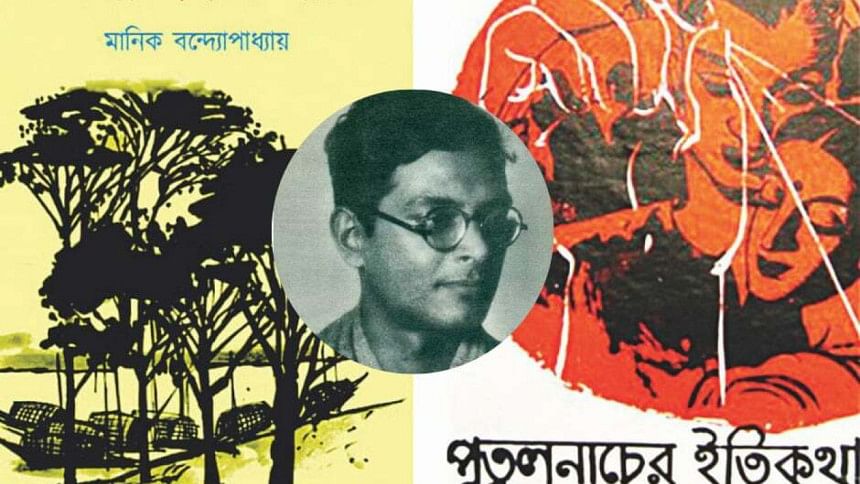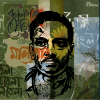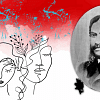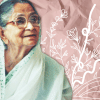Manik Bandopadhyay's timeless works: A mirror to our frailties

Manik Bandopadhyay's literary journey, though tragically cut short by his untimely demise at 48, bore the hallmarks of a writer who had attained full creative maturity. From the age of 20 to 48, his prolific writing spanned the entire arc of a writer's literary life– the ebullient morning of youthful genius, the ripened afternoon of artistic mastery, and the contemplative evening hues of philosophic depth.
While his contemporaries like Bibhutibhushan and Tarashankar Bandopadhyay commanded more popular appeal, Manik carved out a niche amongst the literary connoisseurs and discerning readers right from his debut works. His writing announced the arrival of a startlingly original voice and vision that observed humanity and society through a perspective quite distinctly his own.
Manik's innate style defied established conventions and laid bare the flaws, paradoxes and hypocrisies pervading every sphere of life with surgical detachment. His unflinching, almost clinical gaze lent immense depth to his portrayals of relationships, societal divides, and the myriad shades of human experience – be it love, lust, oppression or dehumanisation. It was this radical newness of perspective that compelled the literary elite to take notice of the young prodigy.
Right from his first novel "Dibaratrir Kabya" (Poetry of the Day and Night), written in 1929 at the young age of 21, but published later in 1935, Manik subverted existing norms of Bengali prose. Eschewing conventional story arcs and character development, he seemed to reinvent the language itself to dissect the human psyche and relationships from an 'inverted, skewed perspective' hitherto unseen. Love ceased being a romantic notion, and deconstructed into obsession, jealousy, hatred and unconscious desires. No questions were answered, only more discomforting truths unravelled.
While "Janani" (The Mother), his debut novel, published in the same year, differs in subject matter from "Dibaratrir Kabya", Manik's distinct authorial voice and approach remain consistent. The multifaceted manifestations of the maternal essence of a housewife named Shyama form the subject of this psychological novel. The author does not portray the character of the mother with celestial or divine grandeur. Instead, he presents the story of a mother through the mirror of reality. It would be a mistake to simply call it a novel; it is rather a poignant slice of the eternal cycle of human life since prehistoric times. The novel deftly portrays the journey of a young woman to her motherhood, conflicts between husband and wife, the tug-of-war in relationships, mental conflicts, financial struggles, selfish and selfless relationships, the enigmatic nature of the human character, and the defeat of dreams in the face of harsh reality. If we look around us, we will find at least one Shyama in our vicinity.
"Ahingsa", published in 1941, is a controversial novel that sparked debates and criticism upon its publication. Set in an ashram on the banks of the Radhai River, the novel explores themes of religious hypocrisy, suppressed desires, greed, and sexual perversion cloaked in the guise of spirituality. Although some critics interpreted the novel as a criticism of Mahatma Gandhi's non-violent movement, Manik clarified that "Ahingsa" is not a political novel but rather a psychological exploration of the prevalent hypocrisy in society. Through his dispassionate perspective, Manik unmasks the true nature of the unhealthy and diseased aspects of religious institutions and their leaders. The novel can be analysed through the lens of Freudian psychoanalytic theory, examining the characters' relationships and desires, while also incorporating a Marxist perspective to explain the unrest and riots caused by class differences.
"Darpan" (Mirror), published in 1945, is one of Manik Bandopadhyay's major political novels. Written with a Marxist consciousness, it presents an authentic portrayal of an exploited society. The novel serves as a mirror, reflecting the class-divided society, the revolt of oppressed villagers against the oppressive rich, and the lives of the impoverished and underprivileged. Through "Darpan", Manik unites the peasant and worker movements, effectively depicting how a bond between the urban working class and rural peasant society can shape a complete movement. While the establishment of a socialist society is not explicitly shown, the novel sows the seeds for such a social system.
"Nagpash" is one of Manik Bandopadhyay's later novels, published toward the end of his life. The title, derived from a mythical weapon mentioned in the Puranas, aptly reflects the novel's theme of the unbreakable bonds that bind individuals to society and relationships, regardless of their circumstances. The novel portrays the lives of characters like Naren, Nandan, Madhab, and Dinanath, who are weary and afflicted by poverty. It offers a harsh depiction of reality, exploring themes such as economic crises, strained relationships, the artificiality of middle-class life, and the constant struggle between self-loathing and self-respect. Through his portrayal of middle and lower-middle-class urban characters, he subverts stereotypes and presents a nuanced depiction of their thoughts, emotions, and actions, mirroring the struggles of the modern urban working class in today's society.
Applying his exceptional ability to express profound insights through simple words and sentences, Manik Bandopadhyay invites readers to contemplate different understandings of life, emphasising the inescapable nature of societal and relational bonds, even when one feels incapable of enduring them.
This unflinching scrutiny of human psychology in all its darkness and depth became a hallmark of Manik's oeuvre. Whether portraying strained family ties in "Janani", social upheaval in the political novel "Darpan", religious hypocrisy in "Ahingsa" or the travails of the urban working class in "Nagpash", he offered an uncompromising perspective rarely seen in Bengali literature.
Yet Manik was no mere explorer of the sordid. His unflinching scrutiny emerged from deep empathy for the oppressed masses. After officially joining the communist movement in 1944, his novels advocated uniting peasant and workers' struggles against exploitation. Works like "Padma Nadir Majhi" (Boatmen of the Padma) authentically captured the lives of impoverished villagers and slum dwellers. However, reducing him to a particular mere 'ism' would be far too simplistic.
Manik's true strength lay in his independent philosophical outlook untainted by dogma or ideological blinders. He questioned every societal norm and status quo but offered no ultimate answers, simply holding up a mirror to life's complexities. This radical objectivity and piercing insight into the whole spectrum of humanity– from its greatest glories to darkest depravities– lend his works a startling relevance even today.
As we celebrate Manik Bandopadhyay's 116th birth anniversary today, his unsparing literary vision serves as a powerful reminder in our era of increasing social inequalities and resurgent reactionary forces.
Just as his intrepid writing endured the constraints of time and space, Manik's radical humanism cuts through barriers of language, culture and geography to reveal searing truths about our shared human existence. His novels jolt us out of complacency, forcing us to confront the myriad injustices, hypocrisies and dehumanising forces festering within modern civilisation– and more crucially, within our own psyches. And that is why this uncompromising bard of the Bengali renaissance remains urgently relevant, even in the 21st century– for he reveals our deepest frailties.
Mahiya Tabassum is a writer and a sub-editor at The Daily Star. She can be reached at [email protected].
Views expressed in this article are the author's own.
Follow The Daily Star Opinion on Facebook for the latest opinions, commentaries and analyses by experts and professionals. To contribute your article or letter to The Daily Star Opinion, see our guidelines for submission.

 For all latest news, follow The Daily Star's Google News channel.
For all latest news, follow The Daily Star's Google News channel. 











Comments